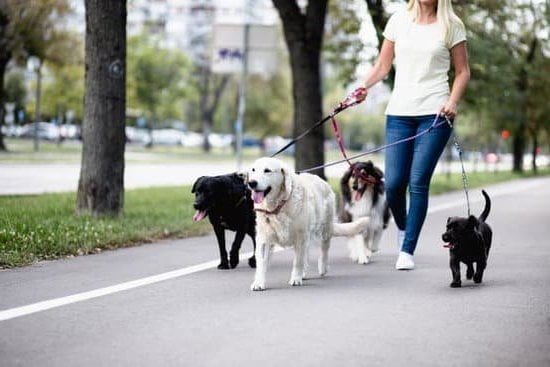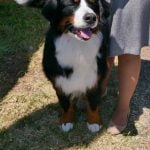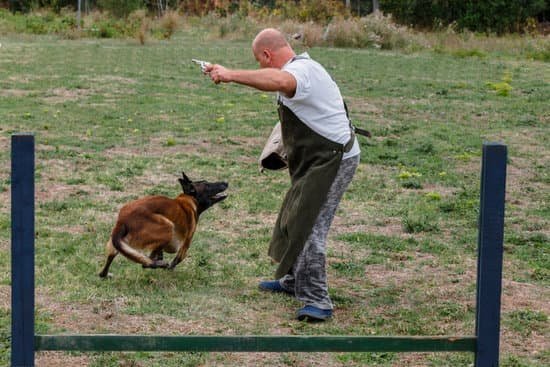Training your dog to not run after porcupines is crucial for their safety and well-being. Encounters with porcupines can lead to painful and potentially dangerous quill injuries for dogs, making it essential for pet owners to take proactive measures in preventing such incidents. Understanding the danger of porcupines for dogs is the first step in ensuring their safety in outdoor environments.
Porcupines are known for their sharp quills which can easily penetrate a dog’s skin, causing pain, discomfort, and sometimes even serious health issues if left untreated. In this article, we will explore the habits and behaviors of porcupines, training techniques to teach dogs to avoid them, as well as tips for managing off-leash time in porcupine prone areas.
By implementing the training techniques and strategies outlined in this article, pet owners can create a safe and secure outdoor environment for their dogs while minimizing the risk of potential encounters with porcupines. Additionally, seeking professional help for dogs with persistent porcupine chasing behavior can provide further guidance and support in addressing this issue effectively.
Identifying Porcupine Habitats and Behaviors
Porcupines are known for their barbed quills, which can cause serious harm and discomfort to dogs if they come into contact with them. It is important for dog owners to understand the habitats and behaviors of porcupines in order to prevent their pets from getting injured.
Identifying Porcupine Habitats
Porcupines can often be found in wooded areas, forests, and grasslands, preferring to make their dens in rocky outcrops or hollow tree trunks. Dog owners should be aware of these habitats and take necessary precautions when walking or hiking with their pets in these areas.
Understanding Porcupine Behaviors
Porcupines are generally slow-moving and docile creatures, but when threatened, they will defend themselves by raising their quills and lashing out with their tails. It is important for dog owners to recognize signs of porcupine presence, such as chewed tree bark or droppings, in order to protect their pets.
Taking the time to learn about porcupine habitats and behaviors is crucial for preventing potential encounters between dogs and these spiky creatures. By understanding where porcupines are likely to be found and how they behave, dog owners can take proactive measures to keep their pets safe from harm.
Training Techniques for Teaching Dogs to Avoid Porcupines
Porcupines can pose a serious threat to our furry companions, and it’s important for dog owners to take proactive steps in training their pets to avoid these prickly creatures. Fortunately, there are effective techniques that can be used to teach dogs not to run after porcupines.
One of the most reliable methods for training dogs to steer clear of porcupines is through positive reinforcement. This involves rewarding your dog for exhibiting the desired behavior, such as ignoring a porcupine’s scent or sound. Here are some training techniques that can help in this process:
- Use treats and praise: When your dog shows disinterest in the scent of a porcupine or refrains from chasing one, immediately reward them with their favorite treat or lavish praise.
- Distraction training: Teach your dog to focus on you when they encounter a porcupine by using toys or commands. Practice this technique consistently during walks or outdoor activities.
Consistency is key when it comes to training dogs not to run after porcupines. It’s essential to reinforce these techniques regularly and in various environments. Additionally, keep in mind that some dogs may require more time and patience in learning this behavior, so be persistent and understanding throughout the training process.
Lastly, seeking professional help from a certified dog trainer or animal behaviorist can provide invaluable support if your dog continues to exhibit persistent porcupine-chasing behavior despite your efforts. These experts have the knowledge and experience to assess your dog’s behavior and implement specialized training strategies tailored to your pet’s specific needs.
By employing these effective training techniques and seeking professional assistance when needed, dog owners can significantly reduce the risk of their pets encountering porcupines and ensure their safety during outdoor excursions.
Using Positive Reinforcement to Deter Dogs From Chasing Porcupines
Positive reinforcement is a highly effective method for training dogs to avoid chasing porcupines. By using positive reinforcement, you can teach your dog that avoiding porcupines brings rewards and praise, making them more likely to repeat the desired behavior.
Implementing Positive Reinforcement Techniques
One of the most common positive reinforcement techniques is using treats to reward your dog for good behavior. Every time your dog successfully avoids a porcupine, offer them a high-value treat and shower them with praise. This will help them associate staying away from porcupines with positive experiences, making it more likely that they will continue to do so in the future.
Consistency Is Key
Consistency is crucial when using positive reinforcement to deter dogs from chasing porcupines. It’s important to reward your dog every single time they exhibit the desired behavior, whether it’s on a walk or in your backyard. Inconsistency can lead to confusion and make it harder for your dog to understand what is expected of them.
Patience and Persistence
Training dogs not to run after porcupines takes time, patience, and persistence. It’s essential to remain calm and patient throughout the training process, as getting frustrated or angry can have a negative impact on your dog’s learning progress. With consistent positive reinforcement and plenty of practice, you can effectively teach your dog to avoid porcupines and keep them safe from harm.
Understanding the Importance of Consistency in Training
Consistency is key when it comes to training dogs to avoid porcupines. It’s important to understand that dogs are creatures of habit, and the more consistent you are in your training, the more successful you will be in preventing them from chasing porcupines. Here are some techniques that can help you train your dog not to run after porcupines:
- Establish clear boundaries: Create set boundaries for your dog when it comes to areas where porcupines may be present. Use visual markers or physical barriers to indicate these boundaries.
- Use positive reinforcement: Whenever your dog successfully avoids a porcupine or responds to your command to stop chasing, make sure to reward them with praise, treats, or toys. This positive reinforcement will reinforce the desired behavior.
- Consistent training sessions: Regular training sessions will help reinforce the message that chasing porcupines is not acceptable behavior. These sessions should be consistent in terms of timing, location, and the commands used.
By consistently implementing these techniques, you can effectively train your dog to steer clear of porcupines and minimize the risk of a painful encounter.
Remember that patience and persistence are crucial when it comes to training a dog not to chase after porcupines. It may take time for your pet to fully grasp the concept, so don’t get discouraged if progress seems slow at first. With dedication and consistency in your training methods, you can successfully teach your dog how to avoid potentially dangerous encounters with porcupines.
Tips for Managing Off-Leash Time in Porcupine Prone Areas
Porcupines can be found in a variety of habitats, including forests, grasslands, and even urban areas. This means that if you live or spend time with your dog in these environments, there is a chance of encountering porcupines. If you enjoy allowing your dog off-leash, it’s important to take extra precautions when in porcupine prone areas to prevent any potential encounters.
One effective strategy is to always keep a close eye on your dog when they are off-leash in porcupine prone areas. By being attentive to your dog’s behavior and surroundings, you can often spot a porcupine before your dog does and guide them away from potential danger.
It’s also advisable to train your dog to respond consistently to recall commands, such as “come” or “leave it.” Training your dog to come back to you immediately when called can help prevent them from wandering off into areas where they may encounter a porcupine. This training should be done in controlled environments first before practicing in porcupine prone areas.
| Porcupine Prone Area Management Tips | Details |
|---|---|
| Stay Vigilant | Keep a close eye on your dog when off-leash |
| Recall Training | Teach your dog consistent recall commands |
Creating a Safe and Secure Outdoor Environment for Dogs
When it comes to creating a safe and secure outdoor environment for your dogs, there are several factors to consider, especially if you live in an area where porcupines are prevalent. One important step you can take is to secure your property with a fence to prevent your dogs from wandering into areas where they may encounter porcupines. A sturdy fence will not only keep your pets safe but also provide peace of mind for you as a pet owner.
In addition to fencing, it’s essential to remove any potential attractants that may draw porcupines onto your property. This includes cleaning up fallen fruits, seeds, and other food sources that may entice these animals. By eliminating these attractants, you can reduce the likelihood of porcupines visiting your property, thereby minimizing the risk of encounters with your dogs.
Another important aspect of creating a safe environment for your dogs is providing them with adequate mental and physical stimulation within the confines of your property. Regular exercise and enrichment activities can help keep your dogs happy and occupied, decreasing the likelihood that they will seek out excitement by venturing into potentially hazardous areas where porcupines may be present.
| Factor | Description |
|---|---|
| Fencing | Install a sturdy fence to keep dogs within the boundaries of the property |
| Remove Attractants | Clean up fallen fruits and other potential food sources that may draw porcupines onto the property. |
| Exercise and Enrichment | Providing regular exercise and mental stimulation activities for dogs within the safety of their own yard or enclosure. |
Seeking Professional Help for Dogs With Persistent Porcupine Chasing Behavior
In conclusion, training dogs to avoid chasing porcupines is essential for their safety and well-being. Porcupine encounters can result in painful and dangerous injuries for dogs, making it crucial for pet owners to take proactive steps in teaching their dogs to stay away from these prickly animals. By understanding the habits and behaviors of porcupines, implementing effective training techniques, using positive reinforcement, and maintaining consistency in training, owners can greatly reduce the risk of their dogs encountering porcupines.
One of the most important aspects of training dogs not to run after porcupines is the use of positive reinforcement. Rewarding dogs for displaying the desired behavior of avoiding porcupines will encourage them to continue this behavior in the future. Consistency is also key in ensuring that these training techniques are effective. It is important for dog owners to remain patient and consistent in their efforts to train their pets, as this will ultimately lead to successful results.
For pet owners who find it challenging to manage off-leash time in porcupine prone areas, creating a safe and secure outdoor environment for their dogs can provide peace of mind. Utilizing fences, gates, or other barriers can help prevent dogs from wandering into areas where they may encounter porcupines. Additionally, seeking professional help for dogs with persistent porcupine chasing behavior can be beneficial.
A professional dog trainer or animal behaviorist can provide personalized guidance and support in addressing this issue effectively. Ultimately, with patience, commitment, and the right approach, pet owners can successfully train their dogs to avoid chasing porcupines for safer and happier experiences outdoors.
Frequently Asked Questions
How Do I Train My Dog to Stay Away From Porcupines?
Training your dog to stay away from porcupines involves consistent and positive reinforcement. Start by teaching the “leave it” command and use treats to reward your dog for obeying. It’s also crucial to keep your dog on a leash during walks in areas where porcupines may be present.
How Do I Protect My Dog From Porcupines?
To protect your dog from porcupines, you should always be vigilant and keep an eye out for signs of porcupine activity, such as chewed tree bark or quills on the ground. Avoid letting your dog roam freely in areas where porcupines may be present and consider using a protective vest or muzzle if necessary.
How Do You Get Porcupines Out of a Dog?
If your dog has encountered a porcupine, it’s essential to remain calm and seek veterinary assistance immediately. Do not try to remove the quills yourself, as this can cause further injury to your dog. A professional will sedate your dog and carefully remove the quills to prevent any complications.

Welcome to the blog! I am a professional dog trainer and have been working with dogs for many years. In this blog, I will be discussing various topics related to dog training, including tips, tricks, and advice. I hope you find this information helpful and informative. Thanks for reading!





